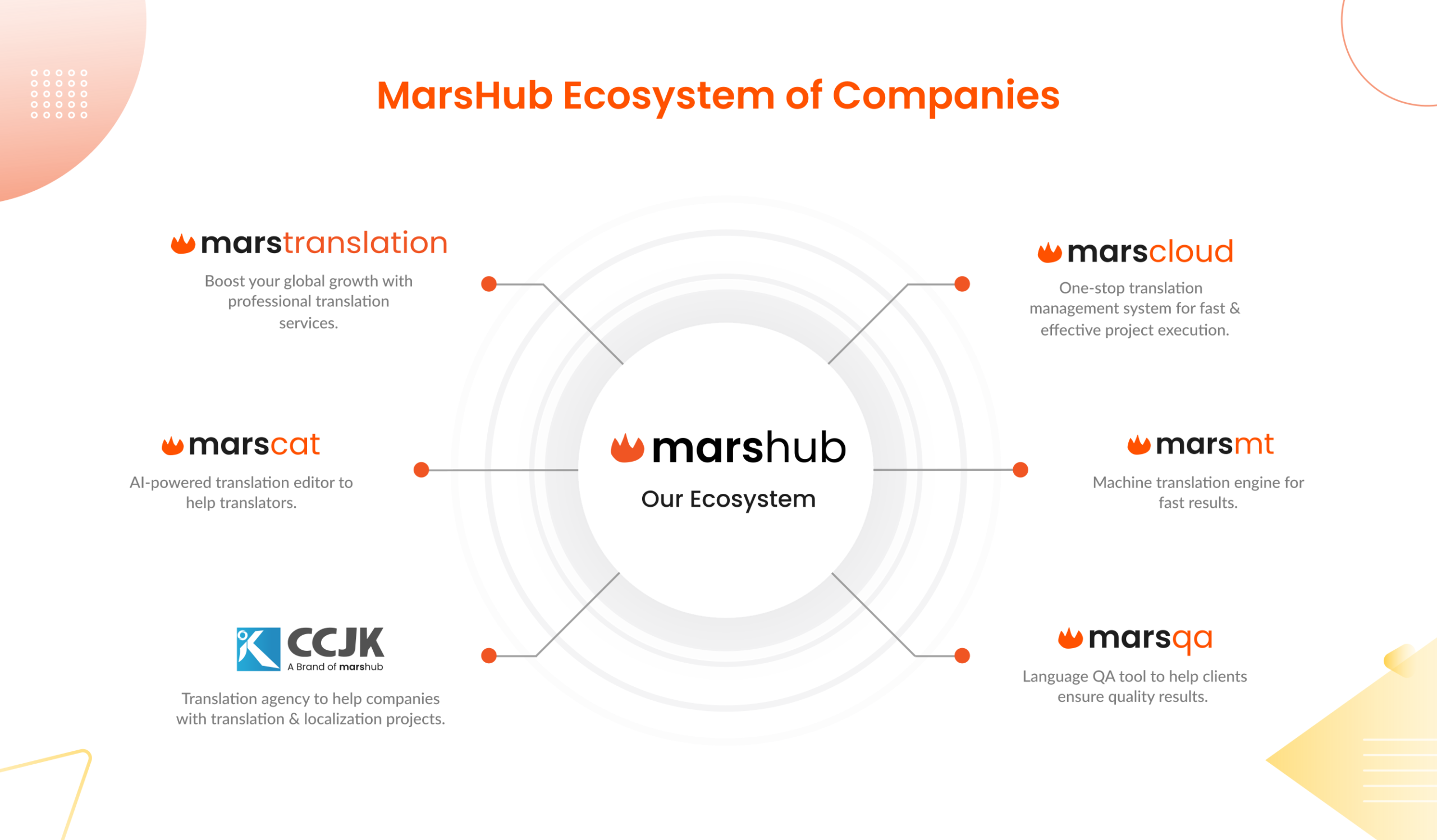A lot of debate is happening in the business world about the use of translation management systems for brands’ international growth. Various studies have clearly shown that localized brands are more likely to be accepted by foreign customers. However, there are companies that still resist bringing in advanced TMS technology. Some of them are simply resilient to change, while others have doubts about the credibility of TMS.
There is indeed some risk involved when you completely change your approach and methods of localization, but you’ve got to take that risk better soon to keep up with the times. To survive in the global business landscape and beat the competition, you must have the right tools in place. Otherwise, you would be left behind in the never-ending rat race of companies. Here we’re going to analyze the key benefits of using TMS for international brands and how they help them maximize their profits.
Translation Management System – Overview
A translation management system is a specialized translation tool designed to effectively carry out companies’ localization operations through proper automation. These systems are very easy to implement and allow you to easily manage your internal and external localization. It automates the translation operations and streamlines your localization tasks, reducing your overall translation project workload. TMS tools also generate automated machine translation using smart algorithms and other features like translation memories.
These systems are very easy to handle and use because of their simplified and well-organized interface. Moreover, advanced TMS provides integration options to make your translation management hassle-free. You can customize the features and functionalities of your TMSs and adapt them to your unique localization needs.
10 Good Reasons Why International Brands Should Use a TMS
Understanding the significance of TMSs is crucial for any business that wants to expand globally. Following are some benefits of professional TMSs that every international business should know about.
1. Translation Made Easier and Faster
Translating is probably the most important and time-consuming part when we talk about localization. You would need content translation into multiple languages regularly. Hiring a human translator would not be expensive, but managing your regular translation needs takes a lot of time. Advanced TMS tools allow you to generate quick translations using powerful AI algorithms. It reduces your need to hire excessive translators, and you are not entirely depending on human translators for your translation management.
Moreover, your tasks are streamlined, and there will be zero complications and messes like manual translation management. The whole translation work is done in relatively less time than human translations.
2. Delivers Great Quality Content
Technology and human expertise go hand in hand to achieve higher-quality outcomes. It is better to use the right proportions of technology and human creativity to achieve desirable results. TMS tools contain advanced quality assurance features that make sure that your translations are high quality and relevant. QA tools in your TMS also look for all sorts of grammatical and sentence errors and remove them from translations. So, the final version of translations that you get from TMS is error-free.
For further quality improvements, you can get your translations proofread by professional human translators. Compared to traditional translations, MT translations take less time to proofread because the quality has already been improved by the QA tool.
3. Smarter File Management
Handling the translation is quite challenging with chaotic manual translation management operations. You’re relying on multiple employees for file management and proper storage, and there’ll be more chances of repetitions and errors. Moreover, you have to follow the whole process and contact the concerned person to get access to the latest version of the file. In the case of TMS, file management becomes super automated and independent of manual handling. In your TMS, you keep all translation files and other data at a central location. All localization team members can easily get access to the file through their devices. There will be no need to send excessive emails to request a translation document.

Moreover, it simplifies everything, which reduces the chances of duplicate data. If there is any redundant file, your TMS can detect it instantly; it deletes the duplicate file right away and keeps the most updated version of a file only.
4. Agile Workflow
Advanced TMSs are designed to automate your localization processes and optimize the overall workflow. Unlike traditional translation processes, these systems would speed up your localization and allow you to meet deadlines. Agile workflows make localization effortless for the translation team, and they also enhance their overall productivity. Moreover, it eliminates all potential errors involved in manual file processing.
Translation management system reduces human intervention, which makes the whole process less complicated and easier to manage. It would also support your project manager by simplifying processes and supporting the translation team throughout the localization project.
5. Promotes Digital Workplaces
Digital workplaces and work-from-home have become a thing after the pandemic. People and companies are now accepting the concept of remote working. However, companies that believe in digital workplaces should have smart systems in place that would allow their remote employees to collaborate with office teams. Using a TMS encourages companies to get more remote workers and native translators on board to work on their localization projects. It wouldn’t just improve the remote employees’ collaborations; it also tackles the communication issues of in-house employees. Not just that, LSPs can also use TMS tools to collaborate with their clients and get direct feedback from them.
6. Works Closely with Business Expansion Goals
TMS tools keep localization management simple and hassle-free. It enhances clarity and gives you a better idea of what’s going on with the project. It allows the project managers to work closely with their business expansion goals and make more informed decisions. Cloud-based TMSs give you more control over things, and you know exactly where your localization project is headed.
It is much easier to track the progress of your project and verify that it is aligned with your business goals. In case there are any gaps between project outcomes and business growth goals, they can be detected instantly. Project managers can make timely decisions and make the required improvements to the project. This way, there will be fewer chances of mistakes that can even lead to project failure if they go unnoticed. So, to keep things on track and prevent your teams from losing their focus on goals, shifting your translation operations to TMS will be the best decision.
7. Better Resource and Team Management
Not all localization projects are the same. Some companies have internal teams, some work with external resources, and others have a mix of both. Based on your organizational structure, resources, and tools, you have to carry out your localization in a way that you can make the most of what you have. You can always tailor your TMS software to your unique localization needs, and you can pick and choose the features that you think go well with your project.
TMSs allow you to effectively manage in-house teams and, at the same time, enable you to collaborate with remote employees as well. You can use your company’s resources more effectively because of the higher clarity, agility, and effectiveness of the overall procedure. There will be no chaos or complications, reducing the chances of blunders. It means you will not be wasting your valuable resources on editing, redoing stuff, and project recoveries.
8. Target More Regions with Fewer Expenses
TMS software may be perceived as an added expense on your budget, but what it does is exactly the opposite. It will significantly reduce your localization costs. Yes, you read it right. It replaces a lot of liabilities you’re already investing in. For instance, having a TMS means there’ll be fewer full-time employees, so fewer salaries to be paid. It will streamline your workflow; there’ll be fewer chances of blunders, which means fewer edits.
It enhances team collaboration; there’ll be fewer gaps in communication, so there’s no need for a separate communication system. In the end, we all know that time is money; TMS automates your localization operations, generates a quick translation, and edits faster. This will save a lot of time that your employees can invest in other important tasks. TMS is your all-in-one tool for low-key localization project management.
9. No Stress About Security

Cyber security phobia has been one of the major reasons why some companies are always reluctant to trust online resources, like TMSs. Cloud-based products are indeed more prone to hacking and there are higher chances of cybercrime. You should only worry about your confidential data security if you don’t have a TMS with a powerful security framework. Understanding the online security concerns of companies, top TMS providers take advanced security measures to prevent data breaches. Get your hands on a TMS that provides automatic security measures, so you don’t have to keep thinking about security hazards. Ask your TMS vendor about the security precautions that they are taking. If you want to add an extra layer of security, you can tailor your TMSs to your security needs.
10. Easy Scalability
One of the best advantages of using a TMS is that it allows you to scale your localization projects more effectively. Many advanced content management systems provide regular progress reports for the localization project. So, you would always be aware of the current status of your projects, and you would know exactly what needed to be done to improve the outcomes and eliminate the mistakes.
It allows you to easily track and monitor key performance indicators. Implementing a TMS that generates a regular progress report can have a huge impact on your overall localization performance. In this case, you are more likely to detect all potential mistakes and mitigate them on time.
Wrapping Up!
Now that you have gone through all the key benefits of the translation management system, you can make a knowledgeable decision about your brand localization project. Brands can significantly enhance their profit ratios by bringing in advanced technological tools. There are plenty of TMS options available, so you better do your research to find the right TMS service provider. Professional TMS tools can transform your localization journey and help you achieve your business growth milestones effortlessly.



